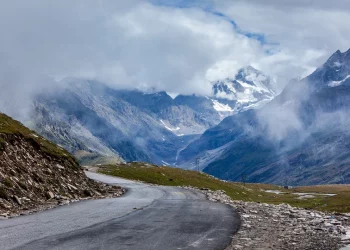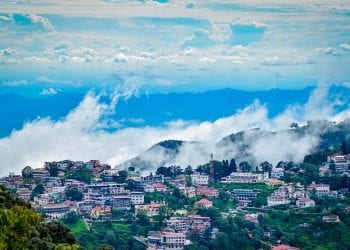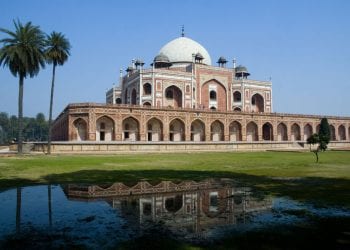The Best of the Mesmerizing Temples in South India
South India is synonymous with temples and few would deny that the architecture of the temples here is unique and beyond comparison. From the Cholas to the Chalukyas, and the Vijayanagar and Dravidian style of architecture each style is evident in these temples and the architectural perfection is worth seeing and exploring on your own. From tall and intricately carved spires to larger than life statues with carved gopurams, South Indian temples will mesmerize you with their grandeur.
Top 11 Temples To Visit In South India
- Virupaksha Temple
- Meenakshi Temple
- Venkateswara Temple
- Ramanathaswamy Temple
- Airavateswara Temple
- The Brihadeshwara Temple
- Sabarimala Temple
- Vitthala Temple
- Sri Ranganathaswamy Temple
- Aihole
- Pattadakal
1. Virupaksha Temple
A UNESCO World Heritage Site that is said to functioning without any interruptions since the 7-century AD, the Virupaksha Temple is one of the most sacred temples in South India. The Virupaksha Temple is dedicated to Lord Shiva and it is part of the group of monuments at Hampi. Pampa is the consort of Virupaksha in this temple.
The original place of worship was a few separate shrines but over the centuries it expanded into a huge complex of sub-shrines, pillared halls, towering gateways, and even a large temple kitchen. The Virupaksha Temple tower is 160-feet tall with nine tiers, has a small gopura, large portico, a mandapam, and the inner sanctum.
The inner walls are supported by the main tower that goes back to the 15-century and was renovated in the 16-century by Krishnadevaraya. Various murals such as ten incarnations of Vishnu, Arjuna’s shooting of fish to marry Draupadi and a mural depicting Saint Vidyaranya as the spiritual founder of Vijayanagar. The elaborate relief work, highly ornate pillars, and carved ceilings and doors are reminiscent of Chalukyan architecture.
The major festivals of India to be celebrated in this temple are the annual chariot festival and the marriage festivities of Virupaksha and Pampa. The temple does not follow any strict dress code but it is recommended that you wear clothes that do not reveal too much skin.
2. Meenakshi Temple
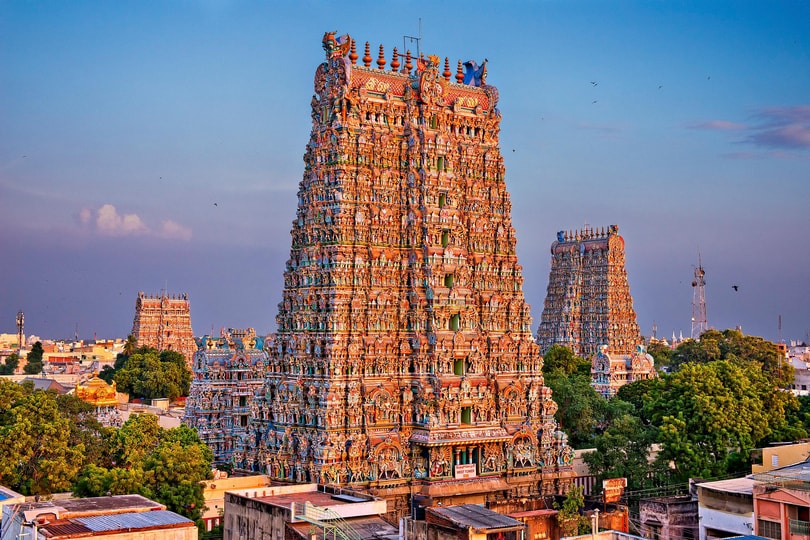
The Meenakshi Temple is also known as the Meenakshi Amman Temple or the Minakshi Sundereshwara Temple is one of the oldest and most important temples of India. It is located in the city of Madurai. The temple was nominated as one of the ‘Seven Wonders of the World’ but couldn’t make it to the final list. Nevertheless, this is definitely a wonder of the medieval architecture of India. The architecture of the temple such as Meenakshi holding a parrot and the raised leg of Nataraja are enough to keep you spellbound. Such is the name and fame of the temple that during the annual ‘Tirukalyanam’ Festival, which takes place over 10 days, the temple attracts more than a million devotees. The history of this majestic temple in South India dates back to the 1-century C.E. but the present structure dates back to the 16-century as the original temple was destroyed by the Muslim invader Malik Kafur in the 14-century. Today the complex houses 14 brilliant gopurams or towers, which include two golden Gopurams or main deities.
There is no dress code as such but it is expected that devotees dress decently when visiting this religious site.
3. Venkateswara Temple
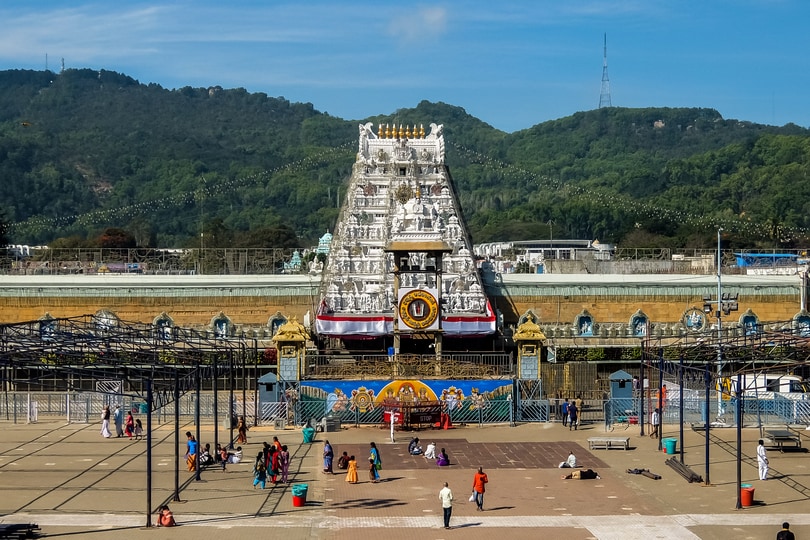
The Sri Venkateswara Swamy Temple is a regal South Indian temple and famously known as the Tirupati Temple, which is at a distance of 22 kilometers from Tirupati and is one of the most famous pilgrimage centers in India. Tirumala, the abode of Sri Venkateswara who is also known as Balaji – an incarnation of Lord Vishnu. Starting from 300 AD the Tirupati Temple was built over a period of time where different dynasties from the Cholas to the Vijayanagar Kings played their part.
The Tirumala shrine is a work of genius of Dravidian architecture. The inner sanctum consists of a 2-meter high standing idol of Venkateswara and the idol is flanked by Bhudevi and Sridevi, his consorts. The black crown that sits atop the head of the idol of Venkateswara is made of pure diamond and is said to be the most precious single ornament in the world. This is one of the most visited religious sites in India.
There is a dress code here for both men and women. Men can wear dhoti or kurta-pajama while women can wear a saree or churidar with a chunni to cover the head. Bermudas, shorts, mini-skirts, middies, sleeveless tops, low-waist jeans, and short-length skirts are not allowed in the temple.
4. Ramanathaswamy Temple

The Ramanathaswamy Temple is a Hindu temple dedicated to Lord Shiva. It is located in Rameshwaram, Tamil Nadu. This temple is another famous pilgrimage site of India and is one of the 12 Jyotirlinga temples of India. The presiding deity is a Lingam of Ramanathaswamy or Shiva, which was believed to have been worshipped by Lord Rama. The temple is typical Dravidian architecture with gopurams (spires) and also holds the unique record of having the largest temple hallway in India with 4000 pillars. Another structure of note here is the statue of Nandi (Lord Shiva’s Bull), which measures 17-feet in height and is 12-feet wide.
Men can wear dhoti, shirt, kurta, pyjama or pant and shirt while women devotees can wear sarees, churidar or ‘pavadai’ with half-saree but devotees wearing lungi, bermudas, jeans, and tight-leggings are not allowed.
5. Airavateswara Temple
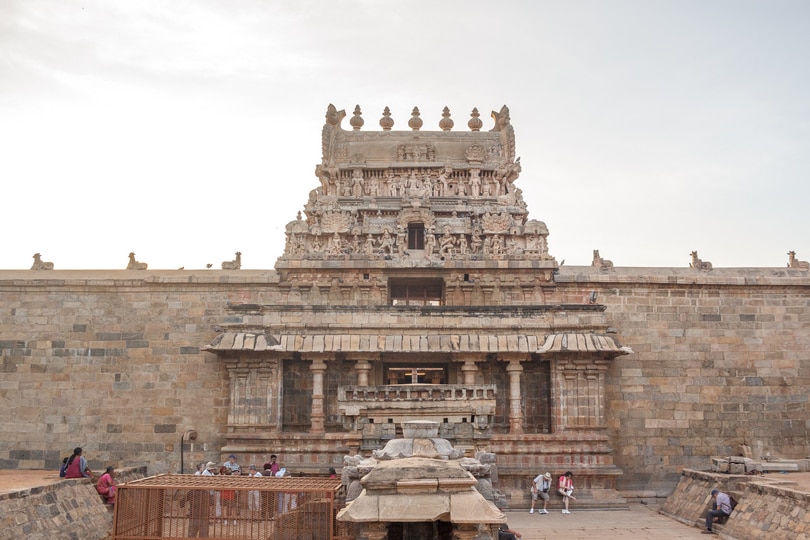
Airavatesvara Temple is part of the ‘Great Living Chola Temples’ complex, which was built by Rajaraja Chola II in the 12-century A.D. Along with the Brihadeswara Temple and Gangaikondacholisvaram Temple at Gangaikonda Cholapuram the three are collectively known as the Great Living Chola Temples and they are a UNESCO World Heritage Site.
The temple is named after Airavaata, Lord Indra’s elephant who had been cursed but once it took a dip in the sacred waters of the temple, it was cured.
There is no formal dress code for this temple but as mentioned above short or body-tight dresses need to be avoided.
6. The Brihadeshwara Temple
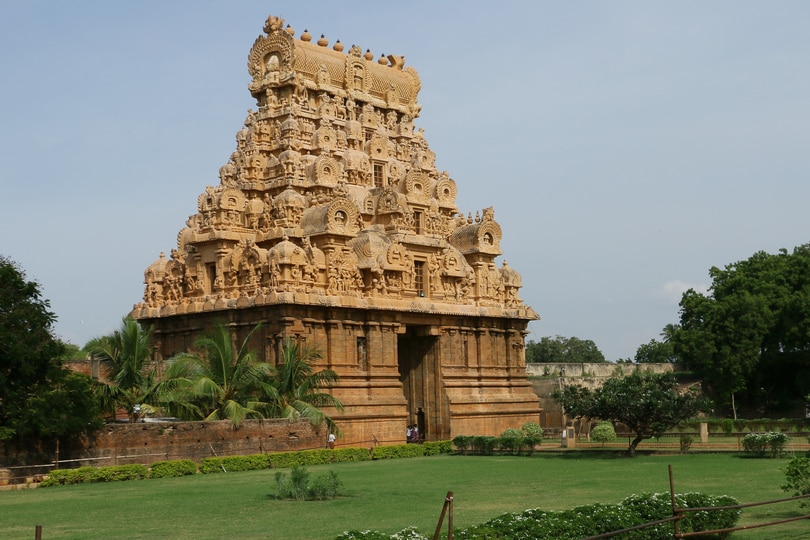
The Brihadisvara Temple at Thanjavur is one of the Great Living Chola Temples, which is part of the UNESCO World Heritage Site marks the greatest achievement of Chola architects and the highlight of Dravidian architecture. The temple was built by the Chola King Rajaraja I between 1003 and 1010 AD. The sculptures and inscriptions here are related to Shaivism, Vaishnavism, and Shaktism. The quality of the sculpture here is also famous and the temple is one of the most visited religious sites in Tamil Nadu.
As the temple is in Tamil Nadu, the dress code for men and women would be followed here. This means that men can wear dhoti, shirt, kurta, pyjama or pant and shirt while women devotees can wear sarees or churidars. Lungi, bermudas, jeans, and tight-leggings are not allowed.
7. Sabarimala Temple
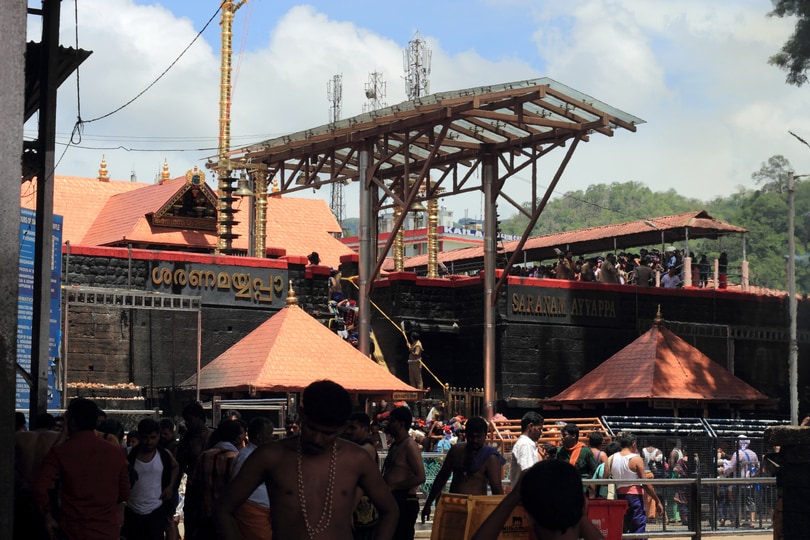
Arguably, among the most visited temples in South India, the Sabarimala Temple is a temple complex located at Sabarimala in Kerala, India. It is situated on a hilltop surrounded by mountains and dense forests and is dedicated to Lord Ayyapan, who is believed to be an incarnation of Vishnu. The temple can be reached using the traditional forest routes or the one from Pamba, which is less physically challenging. The temple was not open to women between the ages of 10 -50 but after a Supreme court order in 2018, women are now being allowed to enter the temple premises. The temple is not open throughout the year but is open only during the days of Mandalapooja, Makaravilakku, and Vishu. Sabarimala is a plastic free zone and devotees are not allowed to bring plastics to Sabarimala.
There is no formal dress code here but it advisable to stick to traditional Indian wear while visiting any temples or religious places in India.
8. Vittala or Vithala Temple, Hampi
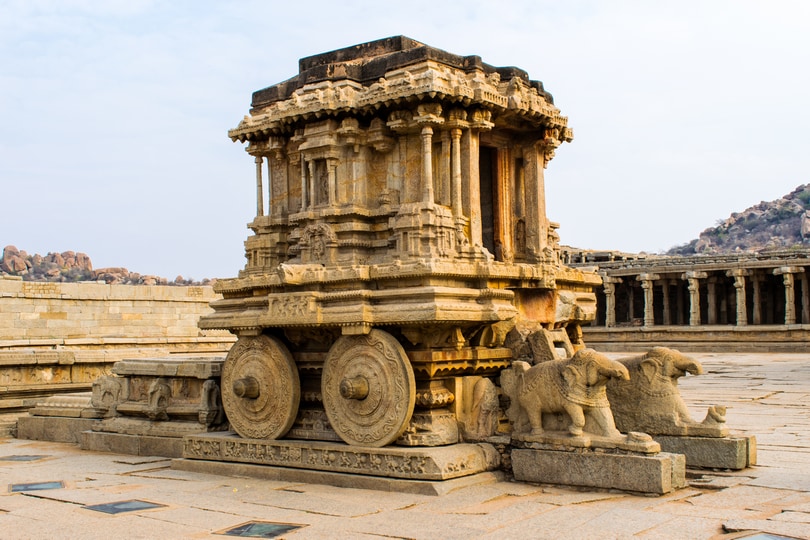
The Vittala Temple is an ancient temple on the Southern bank of the Tungabhadra River and it is one of the largest and most famous structures built in Hampi. It is the most famous tourist attraction in Hampi and it was built in the 15-century during the rule of the Vijayanagara King, Devaraya II. The temple was expanded in the 16-century during the reign of Krishnadeva Raya. The temple is dedicated to Lord Vittala or Lord Vishnu. Like many other structures in Hampi, the standout feature of this temple is its architecture and the signature monument here is the famous stone chariot, which is one of the three stone chariots in India.
Also famous are the musical pillars here which emit musical notes when the pillars are tapped. The temple does not have a strict dress code.
9. Sri Ranganathaswamy Temple, Srirangam
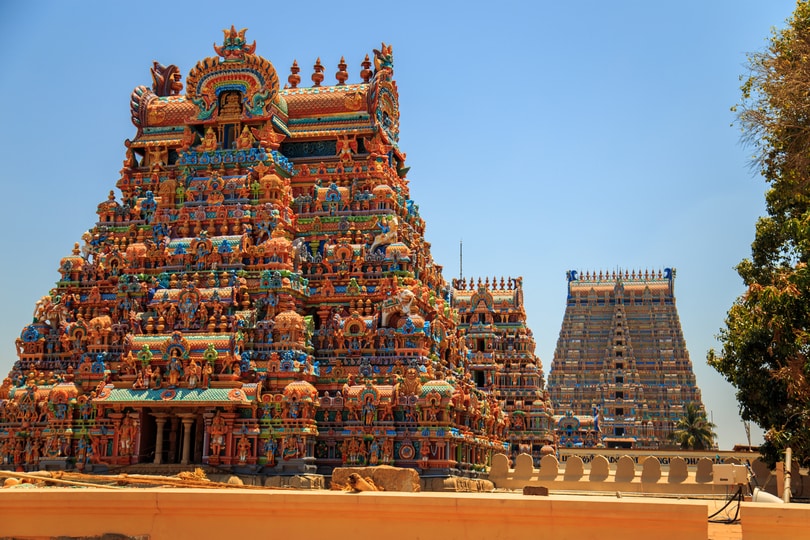
At a distance of 62 kilometres from Thanjavur, the Sri Ranganathaswamy Temple is one of the largest temple complexes in India spread over 156 acres of land and is dedicated to Ranganatha, a reclining form of Lord Vishnu. The temple lies on an island formed by the two rivers Cauvery and Kollidam. The temple is said to be in existence since 2-century B.C. though archaeological inscriptions date back to the 10-century C.E.
The temple is the biggest functional Hindu temple in India and the Vimana on top of the temple is made of gold. It also has the tallest temple tower in India at a height of 236-feet in India.
In the Tamil month of Margazhi, an annual festival is held for 21 days, which attracts more than 1 million visitors.
Since this is another temple in Tamil Nadu, the dress code followed in the rest of the state applies here.
10. Aihole
The temples of Aihole in Karnataka consist of Buddhist, Jain, and Hindu monuments that were built in between the fourth to the 12-century C.E. More than 100 temples are Hindu, a few Jain, and one is Buddhist. The site is spread over 5 square kilometres and the Hindu temples are dedicated to Shiva, Vishnu, Surya, Durga, and other deities. The temples at Aihole are seen as a meeting point for different styles of architecture and a place where new styles of architecture were experimented with.
There is no specific dress code that needs to be followed here.
11. Pattadakal
The UNESCO has described Pattadakal as “a harmonious blend of architectural forms from northern and southern India”. Pattadakal is a complex of Hindu and Jain temples in Karnataka located at a distance of 10 kilometres from Aihole. This is a UNESCO World Heritage Site that is a centre for Chalukya monuments just like Aihole. The temples here belong to the 7-century and 8-century CE.
The friezes in the Hindu temples here depict Vedic and Puranic concepts and elements from Hindu texts as well as depict stories from the Purana, Ramayana, and Mahabharata. There are also depictions of stories from the Panchatantra and Kiratarjuniya. There is a lot of fusion of Northern and Southern styles to be seen here especially in the temples of Papanatha and Virupaksha.
There is no specific dress code that needs to be followed here.
Visit these temples in South India when you want to get an understanding and insight into the greatness and grandeur of ancient and medieval Indian architecture. These temples are the perfect example of the diversity that is called India.
Recent Posts
Top Picks

- OYO
 15 April, 2024
15 April, 2024 - Cultural Tour

- OYO
 15 April, 2024
15 April, 2024 - Cultural Tour

- OYO
 15 April, 2024
15 April, 2024 - Cultural Tour

- OYO
 15 April, 2024
15 April, 2024 - Cultural Tour

- OYO
 15 April, 2024
15 April, 2024 - Cultural Tour

Please rotate your device
Please go back to portrait mode for the best experience




 April 15, 2024
April 15, 2024 